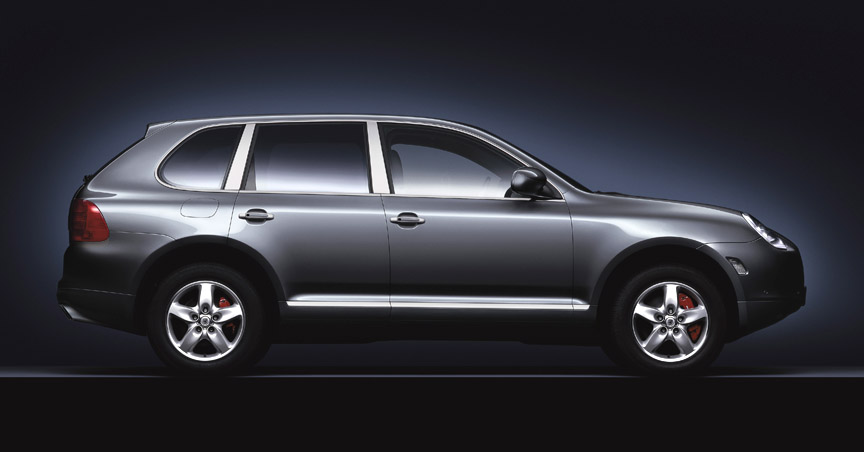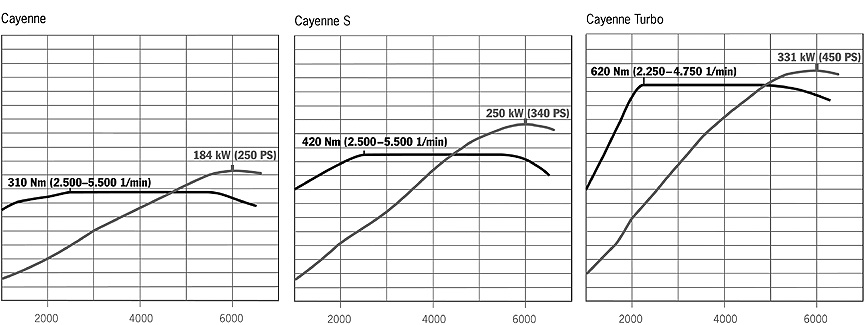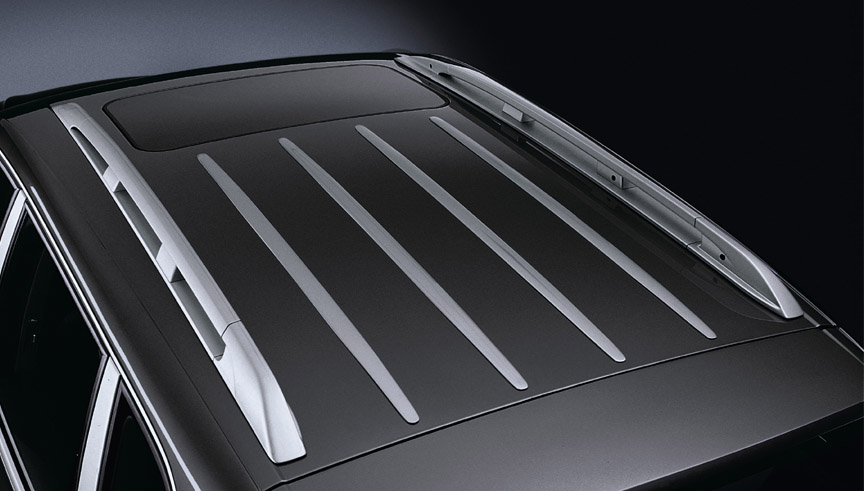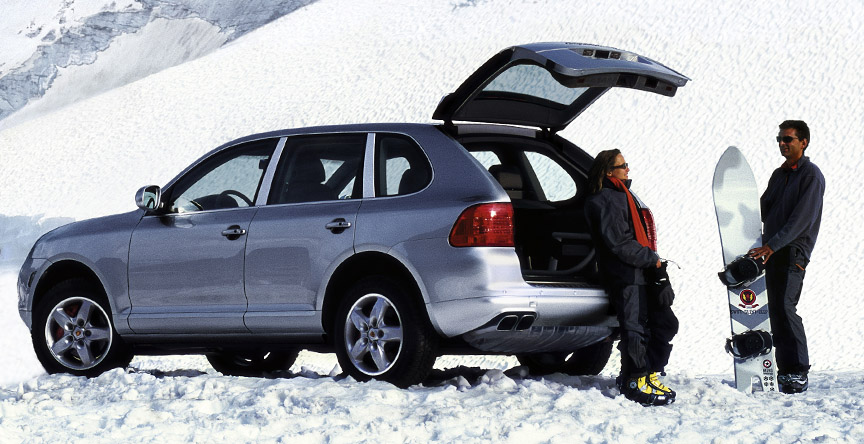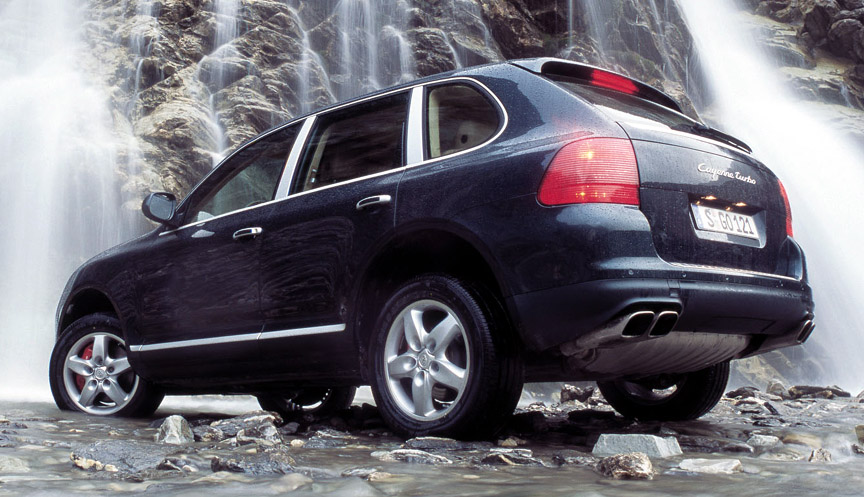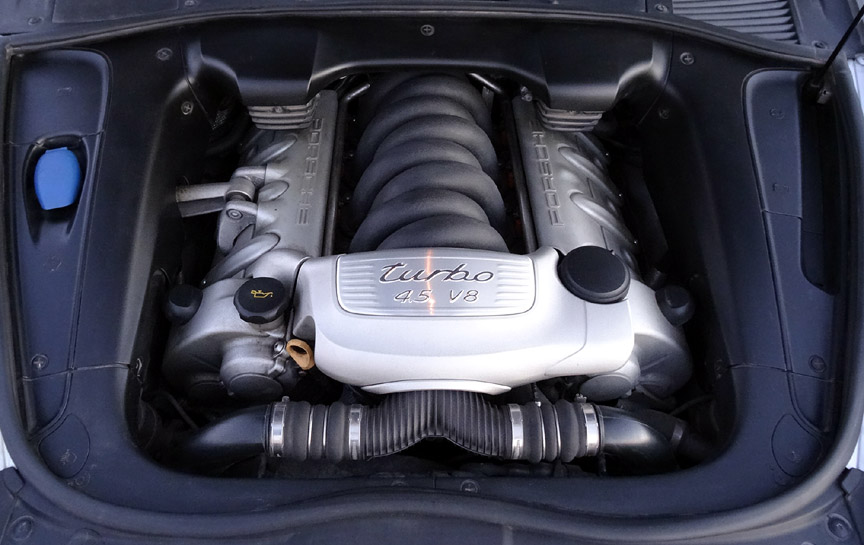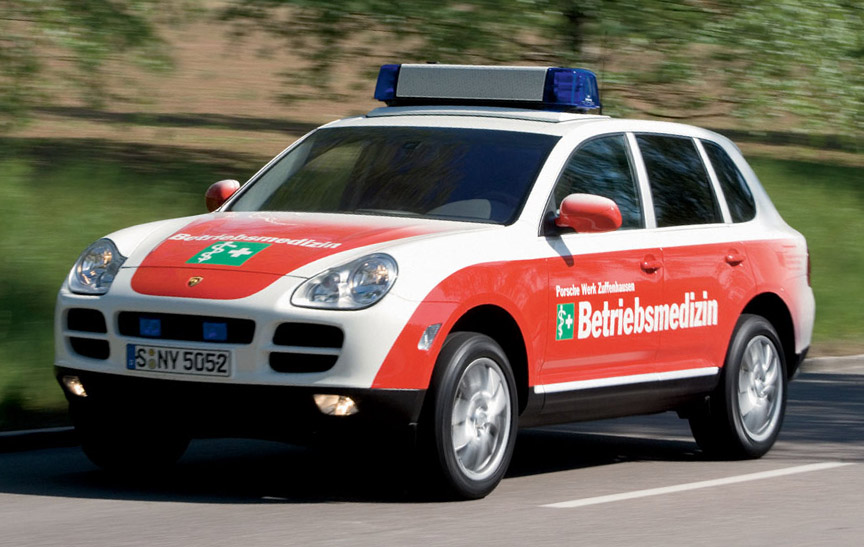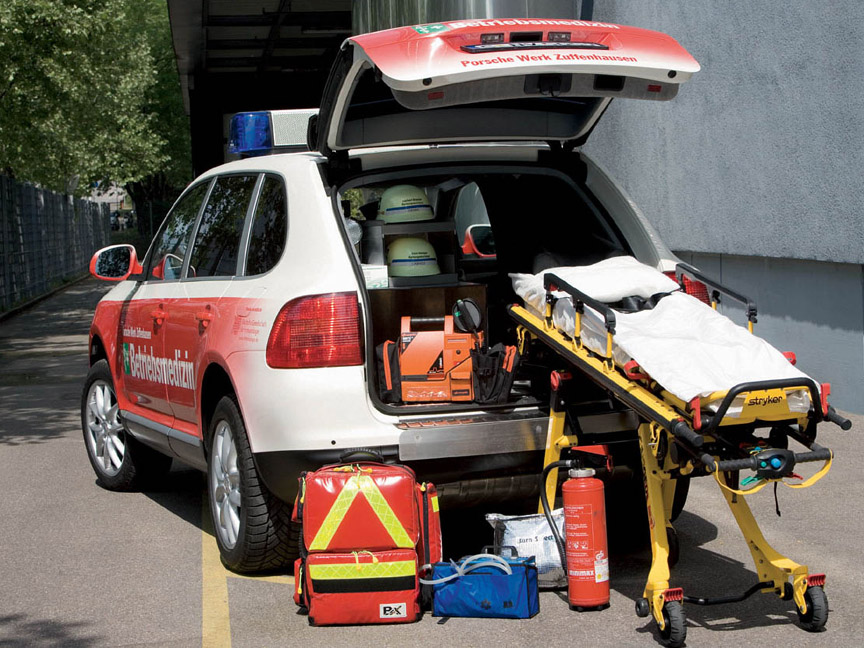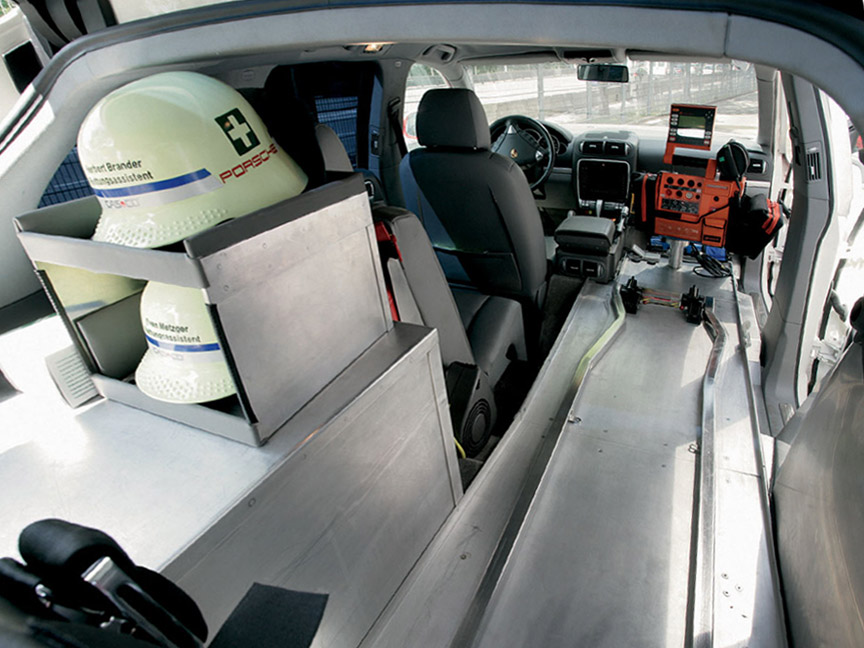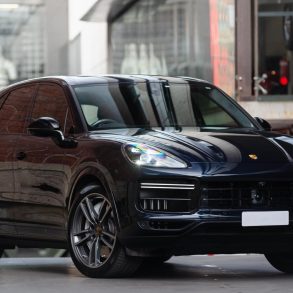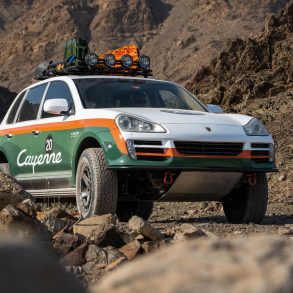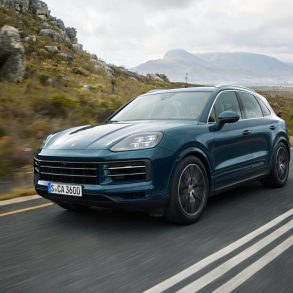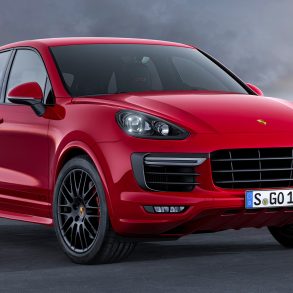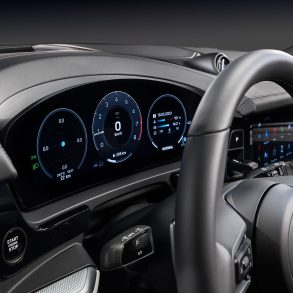1st Generation Porsche Cayenne (955) Story & History
Cayenne (2002 – 2006)
Unveil of official photos: 2002 March 4 / Premiere: 2002 September 25 at Paris motor show press day / Market launch: 2002 December
Performance Summary
| Modification | Engine | Gearbox | kW | lb-ft | Nm | 60 mph | 100 km/h | 100 mph | 1 km | mph | km/h | kg | lb | W/lb | W/kg |
|---|---|---|---|---|---|---|---|---|---|---|---|---|---|---|---|
| 3.2 | 3.2VR6 Volkswagen | Tiptronic 6-speed | 184 | 228 | 310 | sec. | 9.7 sec. | 25.0 sec. | 30.8 sec. | 133 | 214 | 2,170 | 4,784 | 38.50 | 84.80 |
| 3.2 | 3.2VR6 Volkswagen | manual 6-speed | 8.5 sec. | 9.1 sec. | 23.8 sec. | 30.1 sec. | 133 | 214 | 2,160 | 4,762 | 38.60 | 85.20 | |||
| S | 4.5V8 Porsche | Tiptronic 6-speed | 250 | 309 | 420 | 6.8 sec. | 7.2 sec. | 16.8 sec. | 27.3 sec. | 150 | 242 | 2,245 | 4,949 | 50.50 | 111.00 |
| S | 4.5V8 Porsche | manual 6-speed | sec. | 6.8 sec. | 16.4 sec. | 27.1 sec. | 150 | 242 | 2,225 | 4,905 | 51.00 | 112.00 | |||
| Turbo | 4.5V8 Porsche | Tiptronic 6-speed | 331 | 457 | 620 | 5.3 sec. | 5.6 sec. | 12.9 sec. | 25.2 sec. | 165 | 266 | 2,355 | 5,192 | 63.80 | 141.00 |
| Turbo WLS | 4.5V8 Porsche | Tiptronic 6-speed | 368 | 516 | 700 | 4.9 sec. | 5.3 sec. | 168 | 270 | ||||||
| Turbo S | 4.5V8 Porsche | Tiptronic 6-speed | 383 | 531 | 720 | 4.8 sec. | 5.2 sec. | 168 | 270 |
Weight here is DIN weight (90% of fuel, no driver, no cargo). Weight of German versions with standard equipment.
The Story
Porsche car company founder Ferry Porsche died on March 27, 1998. This opened the possibility for CEO Wendelin Wiedeking to proceed with his plans to shift Porsche from dream maker to money maker. A few months later, Wiedeking signed the contract with Volkswagen to jointly create an SUV to compete with the Mercedes-Benz ML which was launched in 1997 and the BMW X5 which was to be launched in 1999. Porsche would contribute more with the research and development tasks and Volkswagen with the production. The plan was to build two cars on the same chassis, one sold as a Porsche and the other as a Volkswagen (Audi SUV was added three years later).
All the bodies were to be made at the Volkswagen factory in Bratislava, Slovakia. In order to give Porsche SUV a German touch, it’s fully assembled bodies would be sent by train to Germany where the engine and the drivetrain would be installed. There was no suitable space at Stuttgart-Zuffenhausen, so a new location for the SUV’s final assembly plant was searched for in Germany. Considering the initiatives from the local municipality and the more affordable workforce in eastern Germany compared to Stuttgart where the Mercedes-Benz and Porsche factories are, Leipzig was chosen as the place to put the foot down. The construction of the plant started on February 7, 2000.
On June 7, 2000, the Porsche SUV was named after a hot chili pepper: Cayenne.
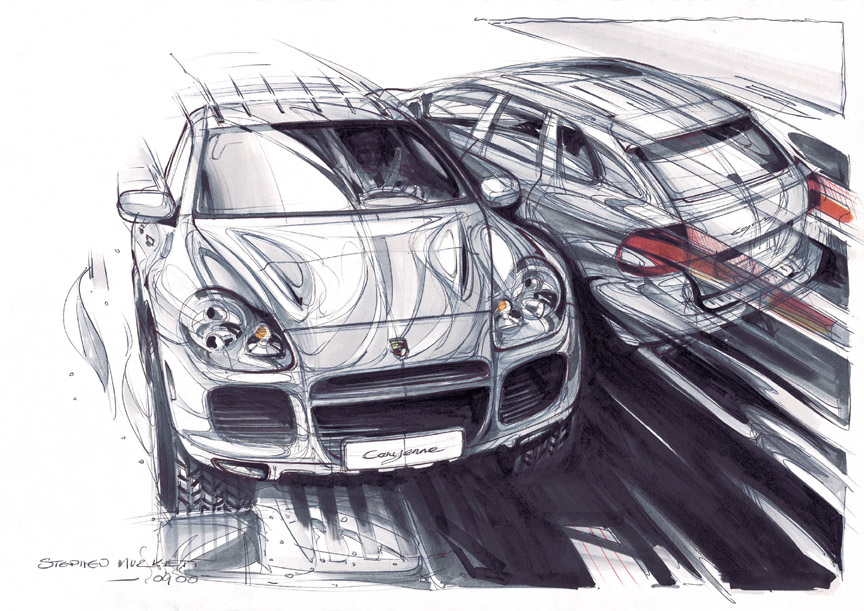
The core construction of the Porsche Cayenne and the Volkswagen Touareg was the same, but the D-pillar angle was different – for the Cayenne to look sportier at the back and for the Touareg to have more cargo space.
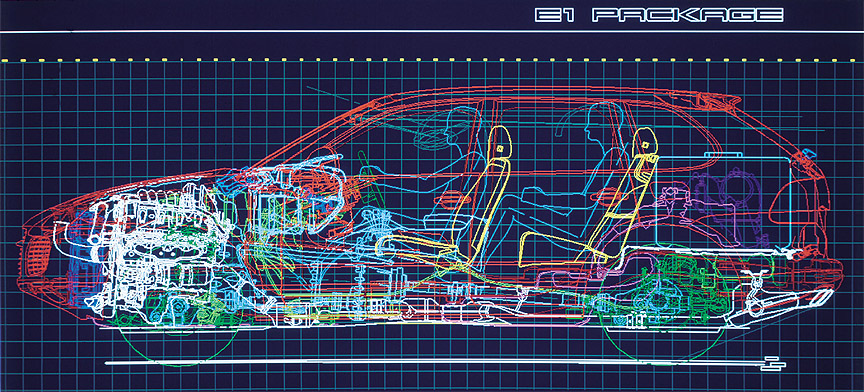
While the 4-wheel-drive system in the VW Touareg has a 50/50 torque split front/rear, this makes any car understeer when driven enthusiastically, so the Cayenne got the 4WD with the bias at the back: 62% of the engine torque is sent to the rear wheels and 38% to the front wheels.
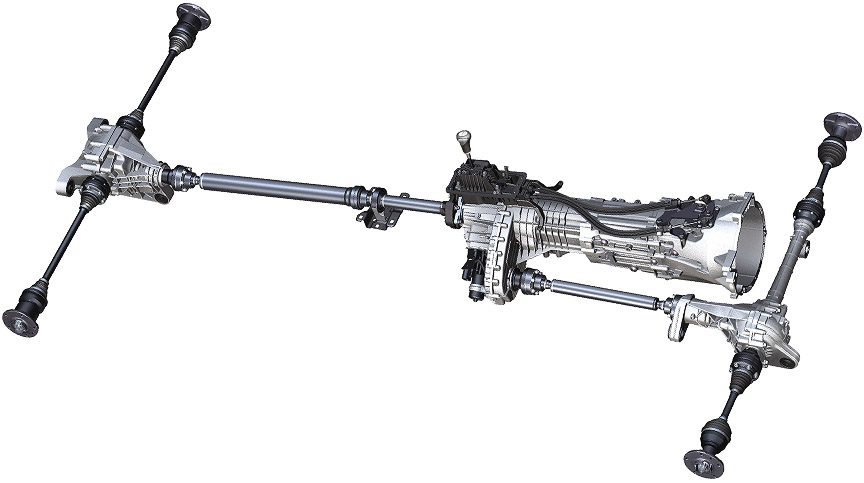
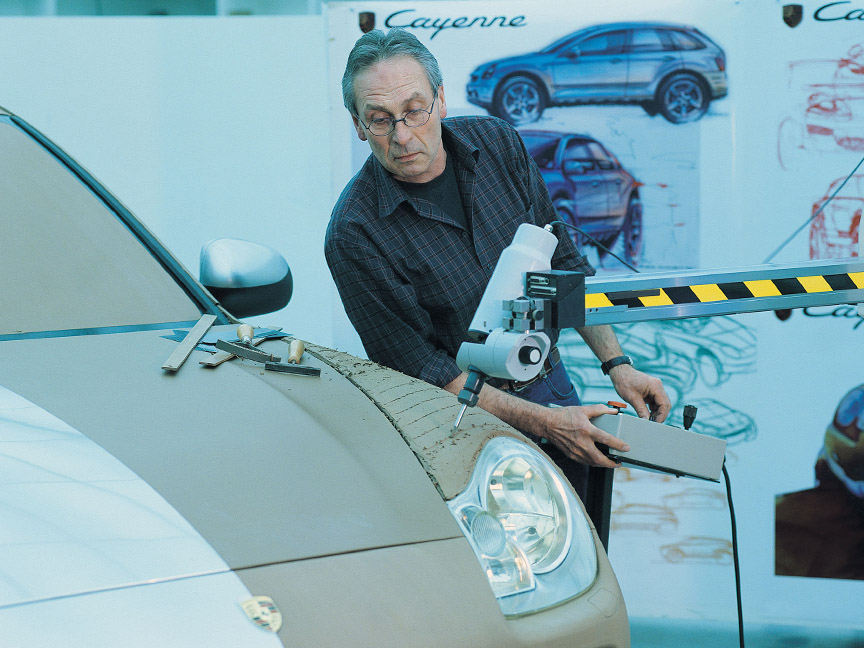
The production of the V8 engines started at the Porsche’s main plant in Stuttgart-Zuffenhausen on December 17, 2001. Porsche’s internal project number for the Cayenne V8 engine was 948. The idle speed of the 4.5-litre V8 is just 580 rpm. The V8 has integral dry-sump lubrication and water-cooled generator. The turbocharged V8 has oil spray cooling of pistons, but not the cheaper V8 S resulting in many damaged normally aspirated 4.5-litre engines.
The turbochargers were manufactured by IHI. They were designed for continuous 160,000 rpm operation! In order not to exceed the maximum rpm speed, the DME control module reduces boost pressure as needed above an altitude of 2200 meters. Oil supply and oil scavenging from the turbochargers was designed to work even when driving on a 45° slope. To minimize turbo lag, the maximum boost pressure is reached at 2500 rpm. Only the Turbo version of the Cayenne can provide acceleration that matches the Porsche badge on its nose.
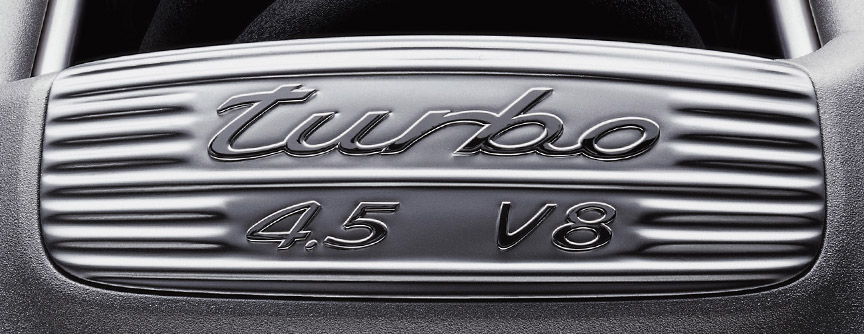
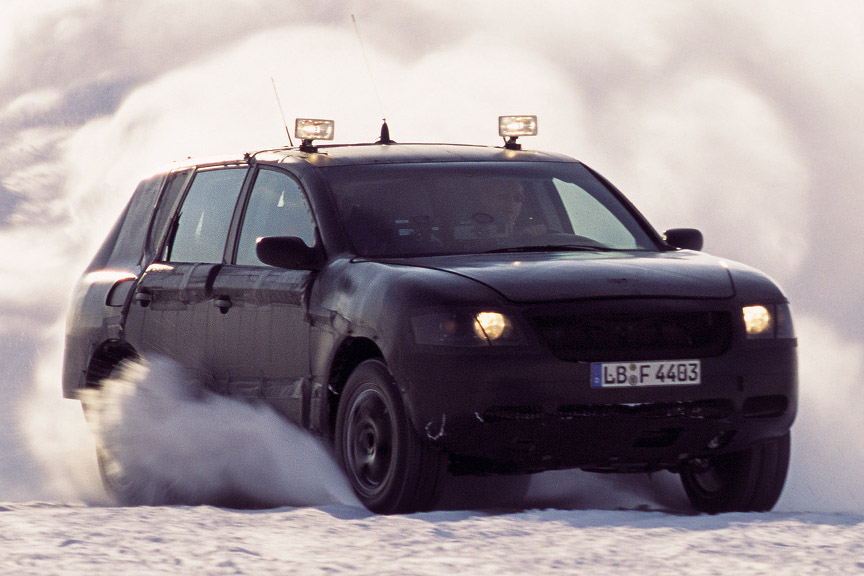
The Cayenne is equipped with the reduction gear – it is the equipment that makes the car a real off-roader. For example, the Mercedes ML and BMW X5 didn’t have it. The gear reduction ratio in the Cayenne is 2.7, which means that at the same engine speed (rpm), the vehicle speed is reduced by 2.7 times in all gears. The reduction gear is designed for off-road use, but it doesn’t give any benefits if the car is equipped with normal tyres. Using reduction gear with street tyres on loose soil even makes the situation worse – the car will dig in as it has enormous wheel torque, but no grip. If you don’t have off-road tyres, better don’t use the reduction gear on slippery surface (sand, for example). On the contrary, to wiggle out, use the raw power and speed in normal transmission mode. The reduction gear can be used also when pulling a boat with the trailer our from the water – with the reduction gear engaged, the car moves very slowly, so the process is better controlled.
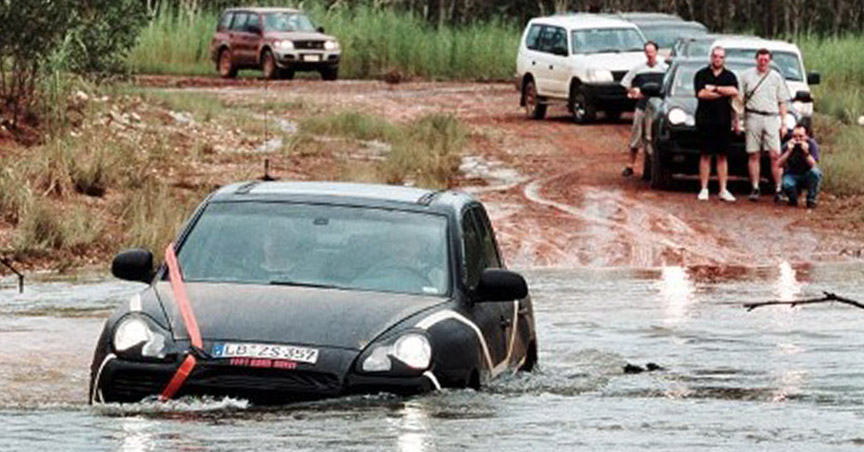
To shorten the off-road braking distance, the off-road ABS briefly blocks the front wheels. The resultant wedge effect in front of the wheels assists the braking. The off-road ABS operates only when the car is in reduction gear and drives straight with a speed below 31 mph/50 km/h. If the steering wheel is turned, the off-road ABS is automatically switched off to maintain steering capability. With low range selected and at speeds below 21 mph/35 km/h, braking is performed with a delay. The advantage of this is that when driving downhill on loose ground with turned wheels, the cornering force is not lost through further free-rolling wheels.
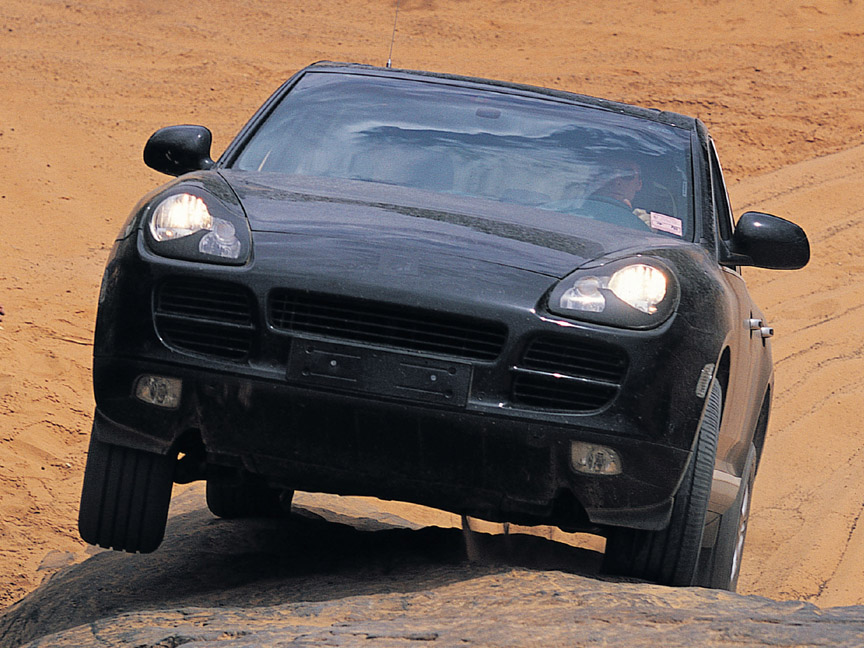
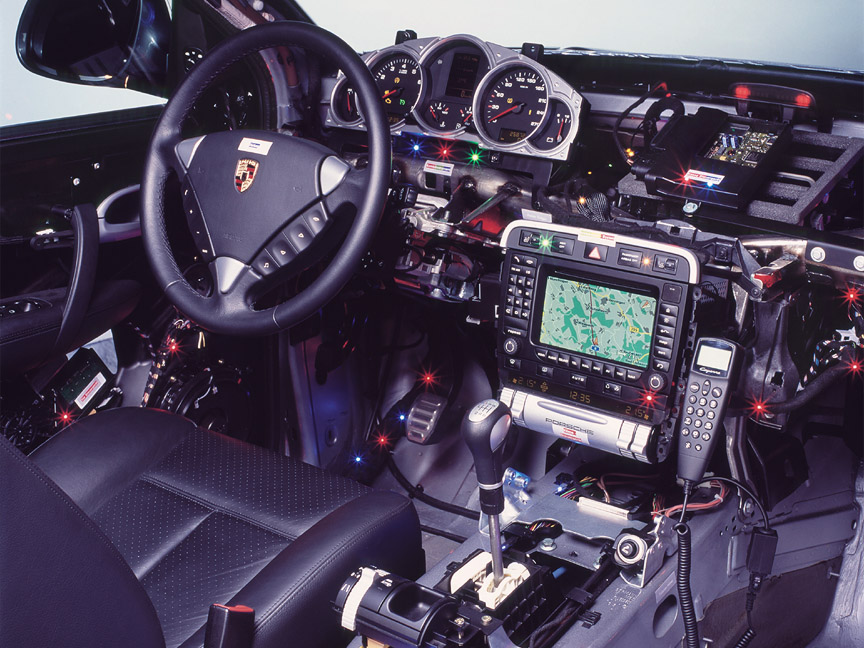
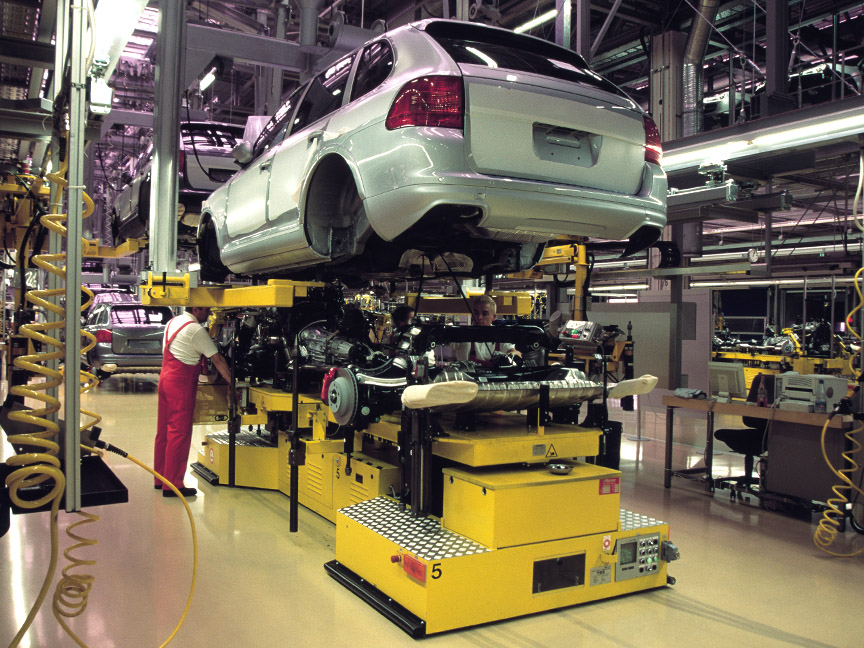
The photos of the Cayenne S and Cayenne Turbo were unveiled at the Geneva motor show in March 2002, but the real unveiling had to wait for half a year more.
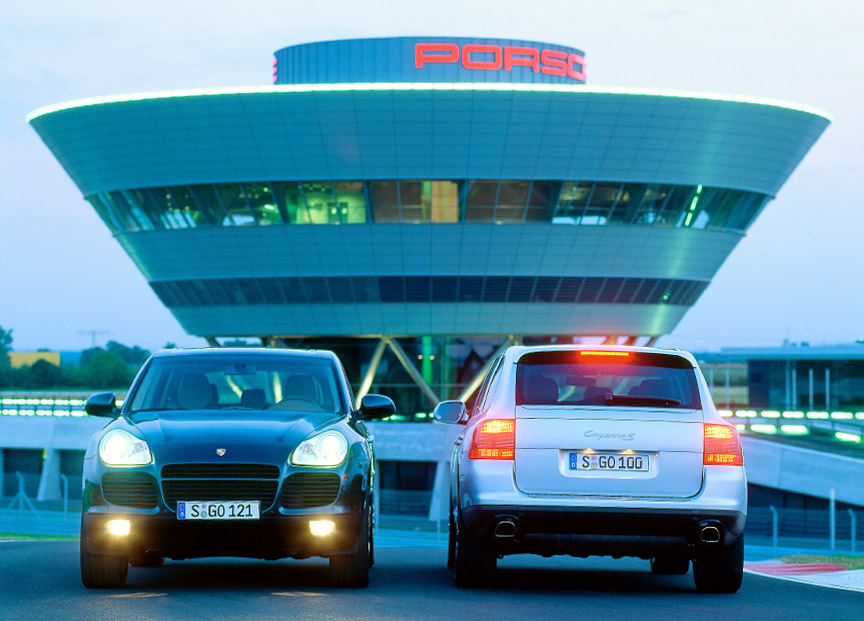

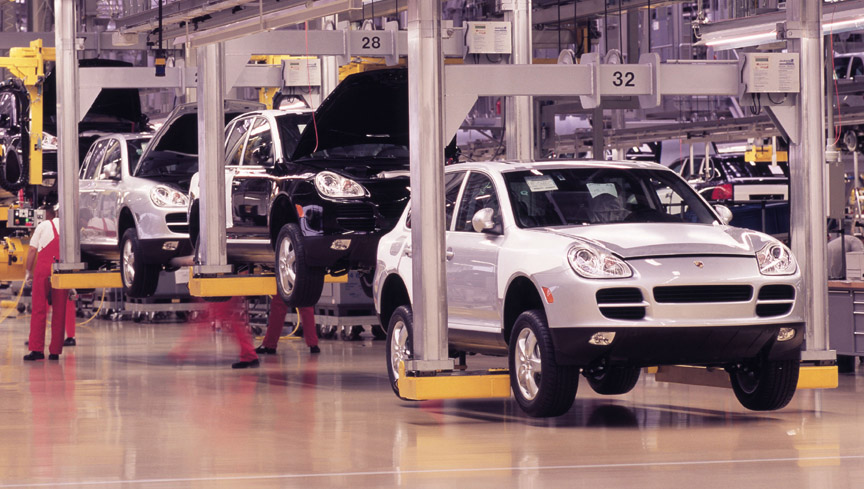
The Cayenne was shown to the press on September 25, 2002, and from September 28 to the guests of the Paris motor show.
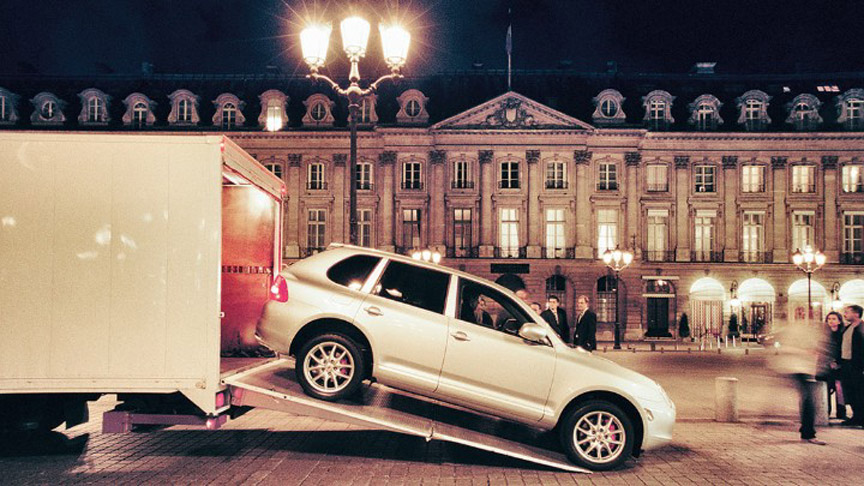
Standard equipment was generous in the Turbo version (air suspension, navigation, Bose sound system and other goodies), but the Cayenne S was rather simply equipped. In Europe it didn’t even have cruise control in standard equipment. The Cayenne was the first Porsche available with the speed-dependent Servotronic power steering. This means that the steering is light at low speeds and therefore the car is easier to park. Cayenne was also the first Porsche to feature a foot-operated parking brake. In addition to the gas tank lid, the glove box and even the sun-moon-roof were included in the central locking system.
A year after the introduction of the 4.5-litre V8 Cayenne S and Cayenne Turbo, the base version Cayenne was introduced. It was equipped with the 3.2-litre VR6 VW engine. The bodies were already built by Volkswagen and now, when equipped with the VW engine, there wasn’t much left of the Porsche, just the badge and the design.

The performance of the VW-engined 2.2-ton SUV was miserable – the acceleration from zero to 100 km (62 mph) took 9.7 seconds with the Tiptronic gearbox. In Europe, manual transmission was available for the Cayenne 3.2 and the Cayenne S which made them a bit better performance wise. When the Cayenne S was equipped with the manual transmission, its V8 rpm limiter was raised from 6500 to 6700 rpm. Cayennes with the manual gearbox have the Porsche Drive-Off Assistant that supports the moving off process when on uphill (the car is not moving backwards when you work with the clutch pedal).
Available from the end of 2003, the Advanced Off-Road-Equipment Package included rear differential lock, disengageable anti-roll bars, side-sill protection, steel plate underfloor protection around the radiator and the second tow loop. The anti-roll bars can be disconnected only in the low range mode and they reconnect automatically as soon as the vehicle speed exceeds 31 mph/50 km/h. With the anti-roll bars disengaged, the PSM Porsche Stability Management cannot be switched off.
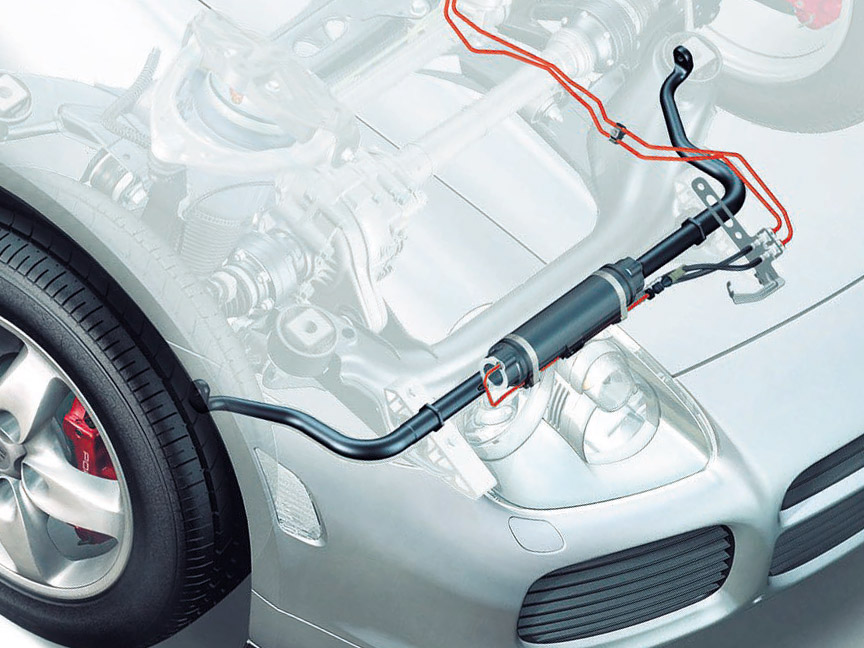
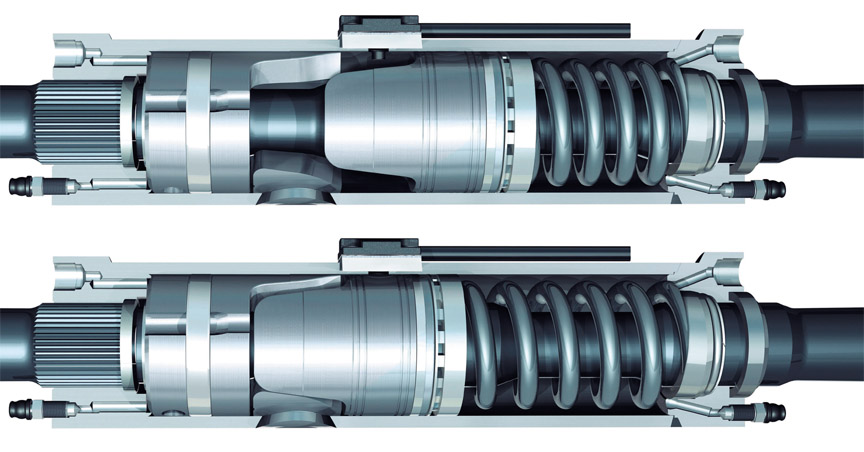
From December 2004, the performance of the Cayenne Turbo could be increased with the 368 kW (493 SAE hp/500 DIN hp) factory power kit (option code E81). The WLS (WerksLeistungsSteigerung, factory power increase) engine came with larger intercoolers and bigger brakes. The Cayenne Turbo WLS was the most powerful Porsche in production after the Carrera GT supercar. A year later, the WLS was topped with even more powerful Cayenne Turbo S with 383 kW (513 SAE hp/521 DIN hp).
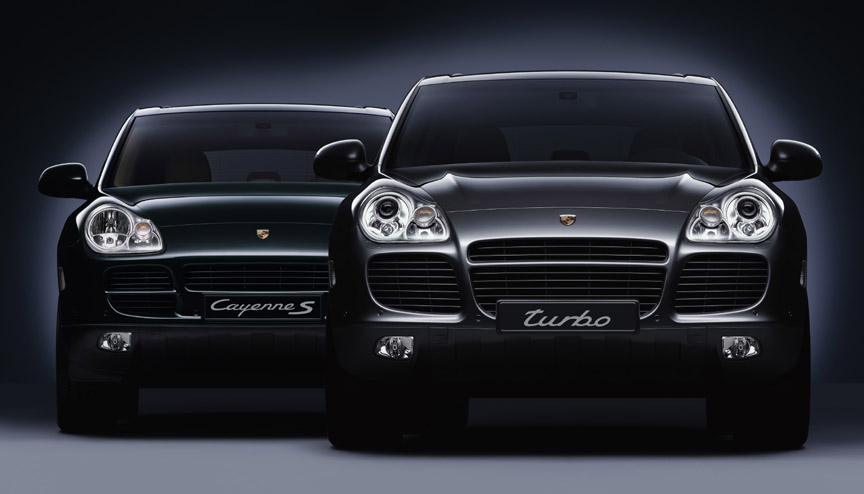
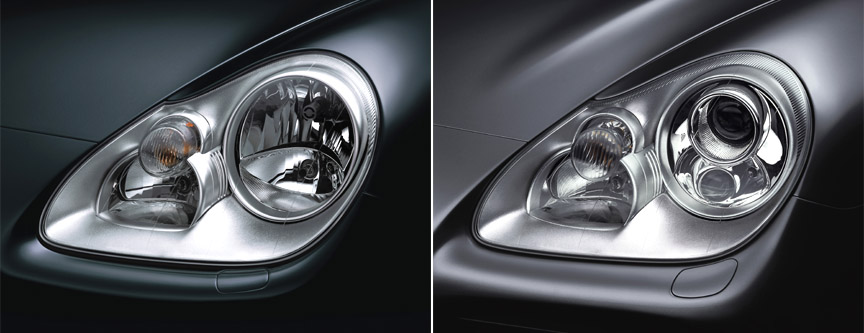
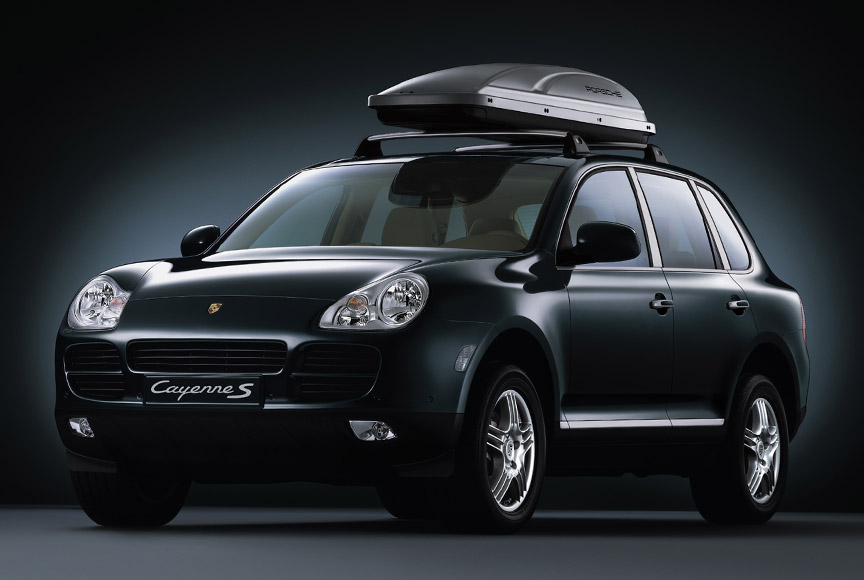
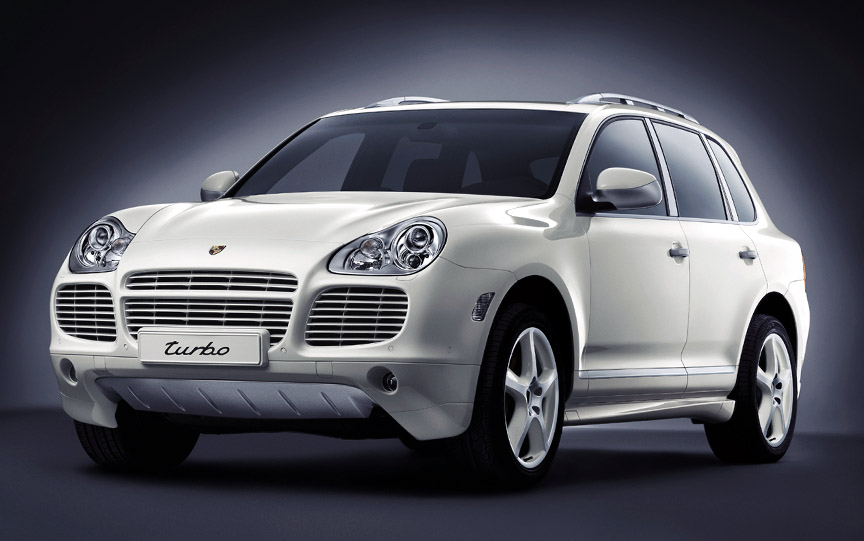
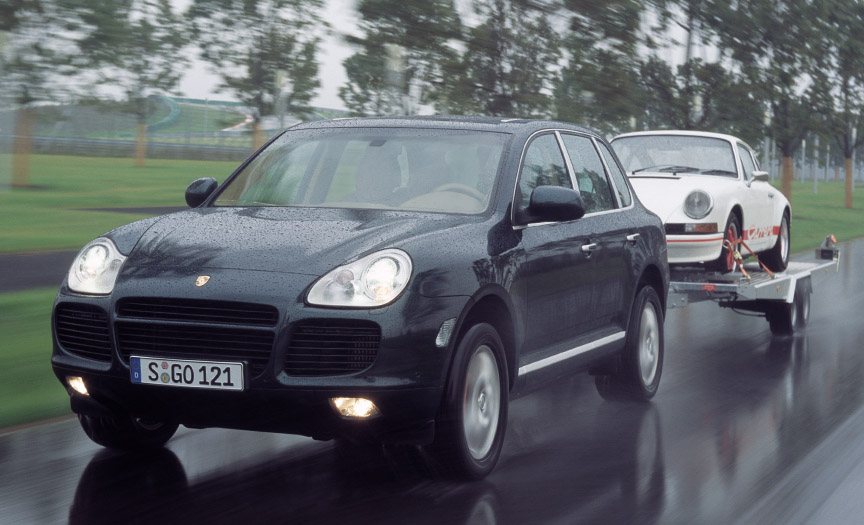
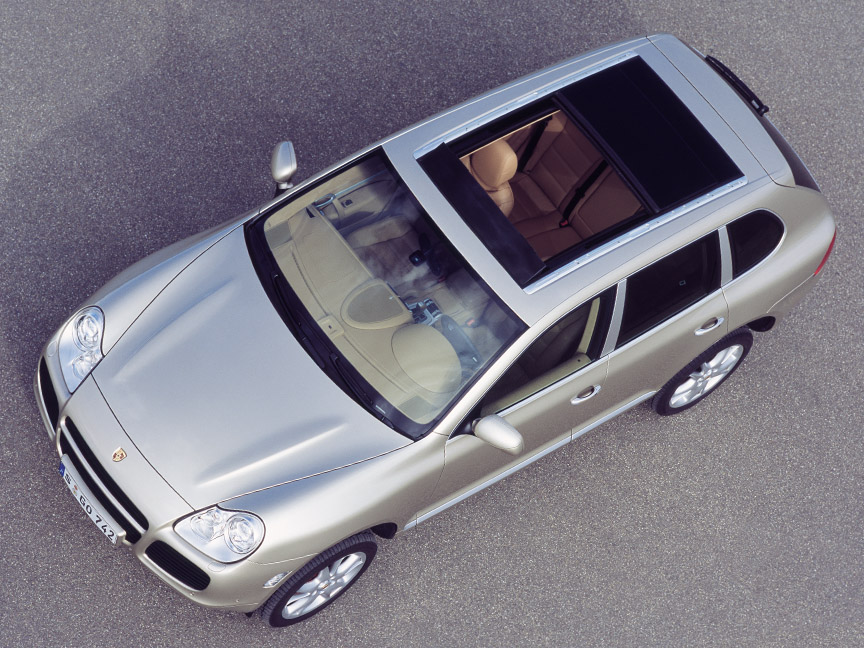
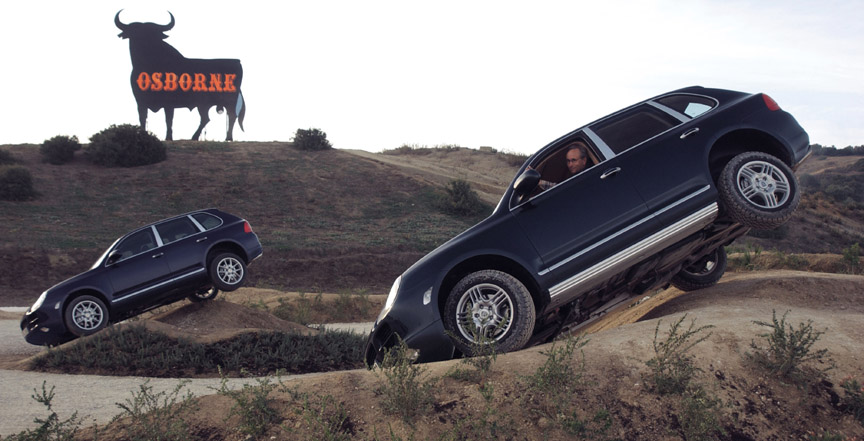
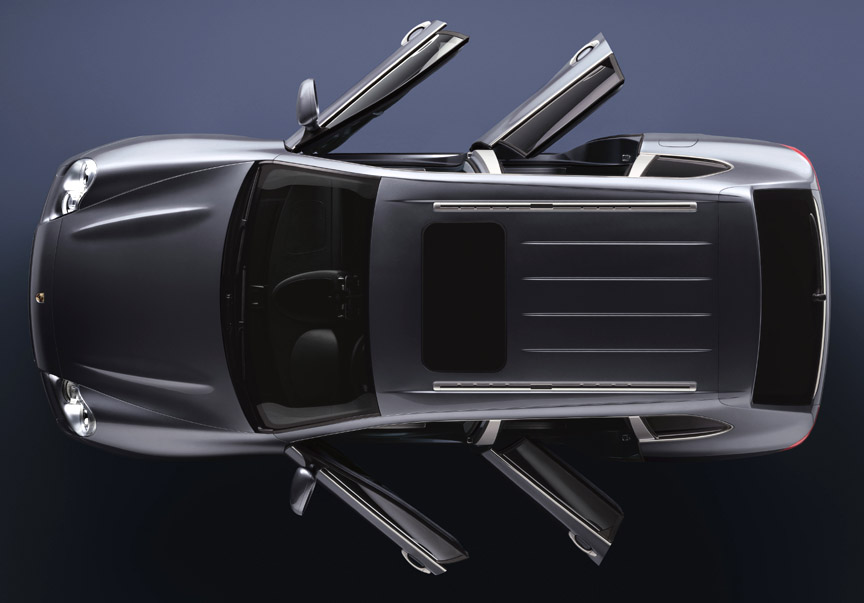
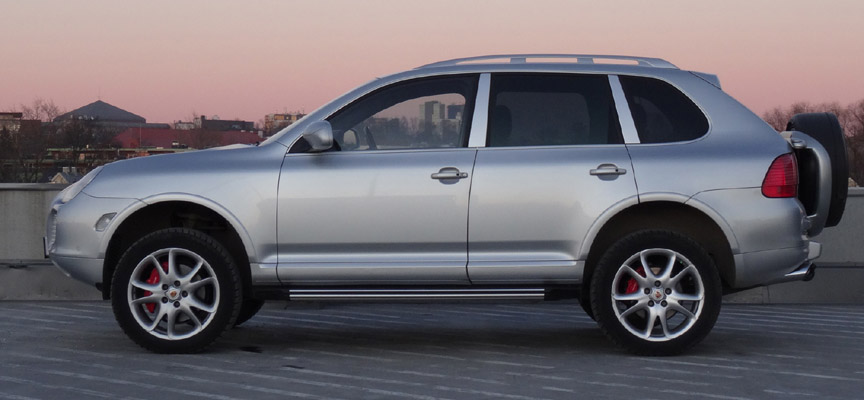
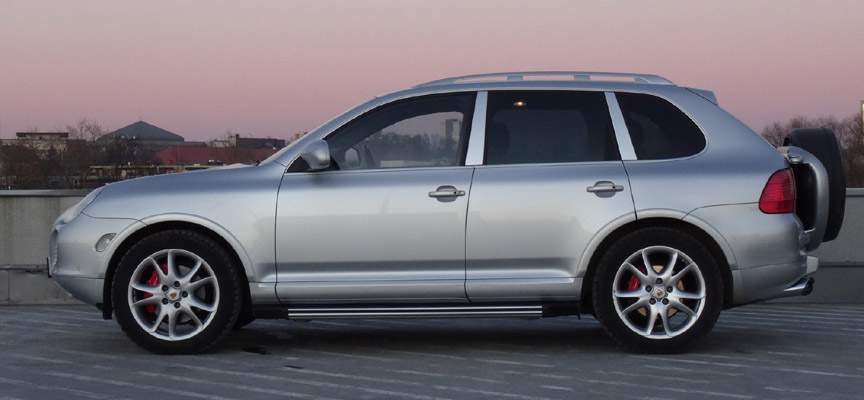


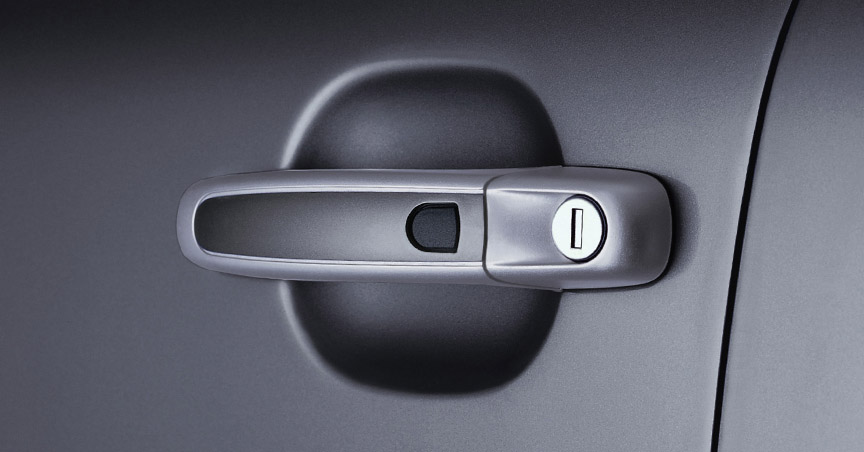
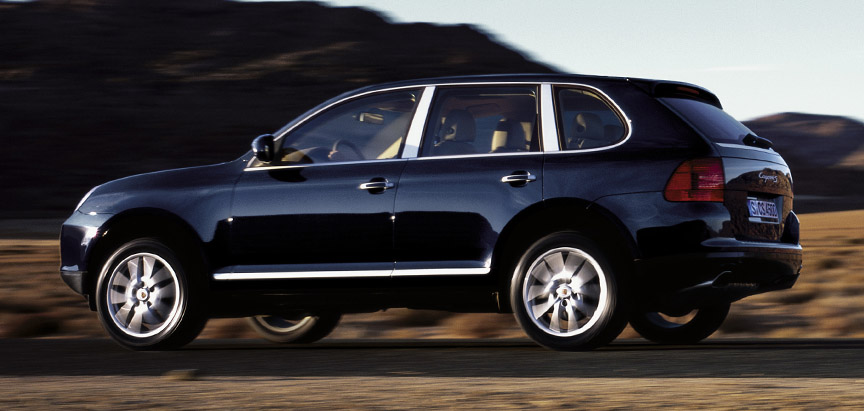

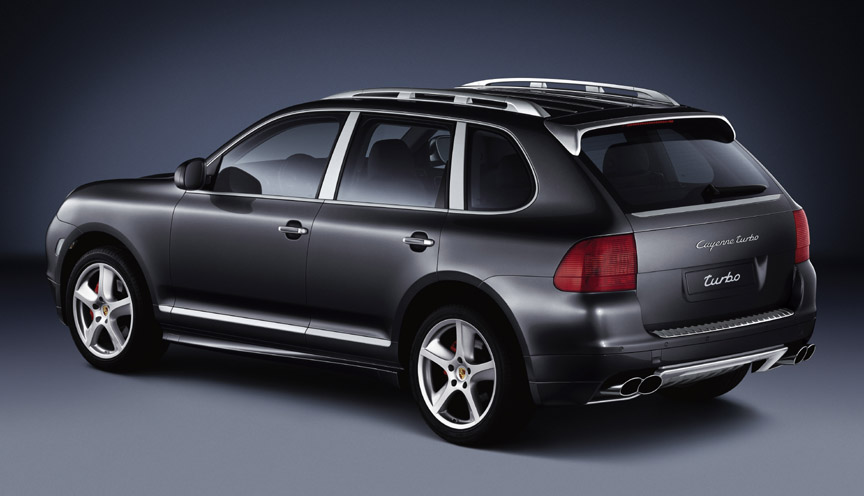
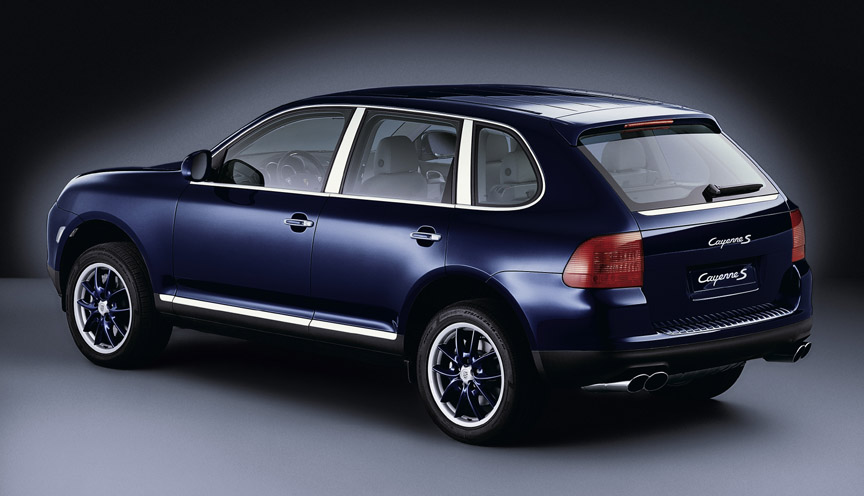
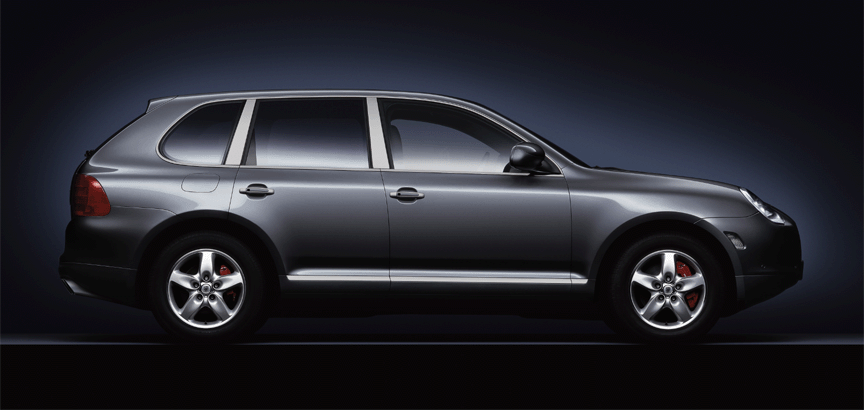
Ground clearance
| Steel springs | Air suspension | |
| 273 mm Special off-road level | When the speed of 19 mph/30 km/h is exceeded, the car is automatically lowered. | |
| 243 mm Off-road level | If a speed in excess of 50 mph/80 km/h is reached, the system automatically lowers to Normal level. With the reduction gear engaged, it is possible to remain in Off-Road level up to 62 mph/100 km/h. | |
| 217 mm with Tiptronic | 217 mm Normal level | |
| 193 mm with manual | ||
| 190 mm Low level | This level can be manually selected and used as a default level instead of Normal level. When the speed is higher than 78 mph/125 km/h, Low level is activated automatically (when the speed drops below 25 mph/40 km/h, Normal level is resumed if it was selected previously). | |
| (179 mm Special low level) | Above 131 mph/210 km/h, the vehicle is lowered to Special Low level. When speed drops below 105 mph/170 km/h, Low level is resumed. | |
| 157 mm Loading level | If the vehicle is moving at a speed greater than 3 mph/5 km/h, an automatic change to Low or Normal level is made depending on which was selected previously. |
Engine and transmission codes
| Cayenne | Cayenne S | Cayenne Turbo | |
| Engine code | M02.2Y | M48.00 | M48.50 |
| Tiptronic code | A48.20 | A48.00 | A48.50 |
| Manual gearbox code | G48.20 | G48.00 |
Brake disc sizes
| Cayenne | Cayenne S | Cayenne Turbo | Cayenne Turbo WLS / Turbo S | |
| Brake disc diameter, front | 330 mm | 350 mm | 350 mm | 380 mm |
| Brake disc diameter, rear | 330 mm | 330 mm | 330 mm | 358 mm |
Cayenne S Titanium
At the end of the production, Cayenne S Titanium Edition was for offered in USA. It was just a cosmetic edition, and controversial one – most of the “Titanium” cars were Pure Red like fire engines. In addition to red, the car was available in cool light blue Iceland Silver metallic, Sea Blue metallic and non-metallic black. The interior had two-tone seats, black in the middle and beige or gray at the edges. The door panels and dashboard were in matching 2-tone color scheme. Learn more.
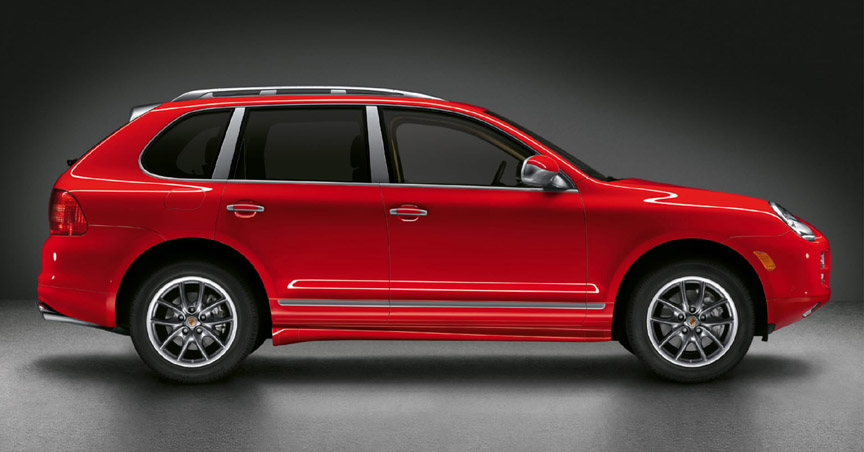
Cayenne Ambulance Car
15 trainees of Porsche AG created a Cayenne 955 S ambulance vehicle for the factory use.
The End of The 955 Cayenne
While the Cayenne model year typically changes in June, the 2007 model year was not started and the 2006 model year was extended from June 2005 until the end of 2006. 150,371 units of the Cayenne 955 were made between 2002 and 2006. In December 2006, the production of the facelift version, the Cayenne 957, started.


